Former science teacher, now exhibited mixed-media artist, Regina Dunn is an inspiration to artists who have yet to find their forte and establish themselves on the art scene.
Starting out with what she admits were decidedly sparse art skills, Regina embarked on a varied series of local art workshops that spurred her on to experiment at home. Only after being encouraged by her husband, did Regina overcome her doubts about herself to take a three-year art cloth course in her native Texas, USA – something that she now gratefully calls her ‘artistic awakening’.
Regina now specialises in fabric-based art, hand-dyeing white fabric and then painting, printing and hand-stitching onto it to express concepts that have deep meanings for her.
She artfully employs symbolism to convey contrast and emotion; an image of a decaying leaf represents both deterioration and also progression towards something more positive. Through her work, Regina expresses how humans relate to change and look to the past, whilst also looking towards the future.
Regina’s deep, heartfelt connection to the earth may be why followers of her work have described it as peaceful, calm, and ethereal. When she immerses herself in her zone of creation, she pursues insightful journeys that produce art that leaves her feeling enriched and fulfilled.
Initially working with quilting, Regina’s work has been shown in SAQA’s (Studio Art Quilt Associates) national exhibitions in the USA and local shows in her home state of Florida.
Her local art projects include one of her works being reproduced on vinyl and displayed at the main intersection in her home town of DeLand. She collaborated at Stetson University to print large silk panels for a multimedia exhibit in 2018.
Regina is a member of ArtsEtc where she has also lectured, SAQA (Studio Art Quilt Associates), Surface Design Association, and Museum of Art DeLand. She continues to advance her craft by studying surface design techniques and developing them further each year.
In this interview, you will learn how Regina moved from her early learnt, technique-driven work to developing her own more personal abstract visual interpretations, why taking photos is a key part of her process and how forest-dwelling and her extensive travels contributed to her love of visual expression.
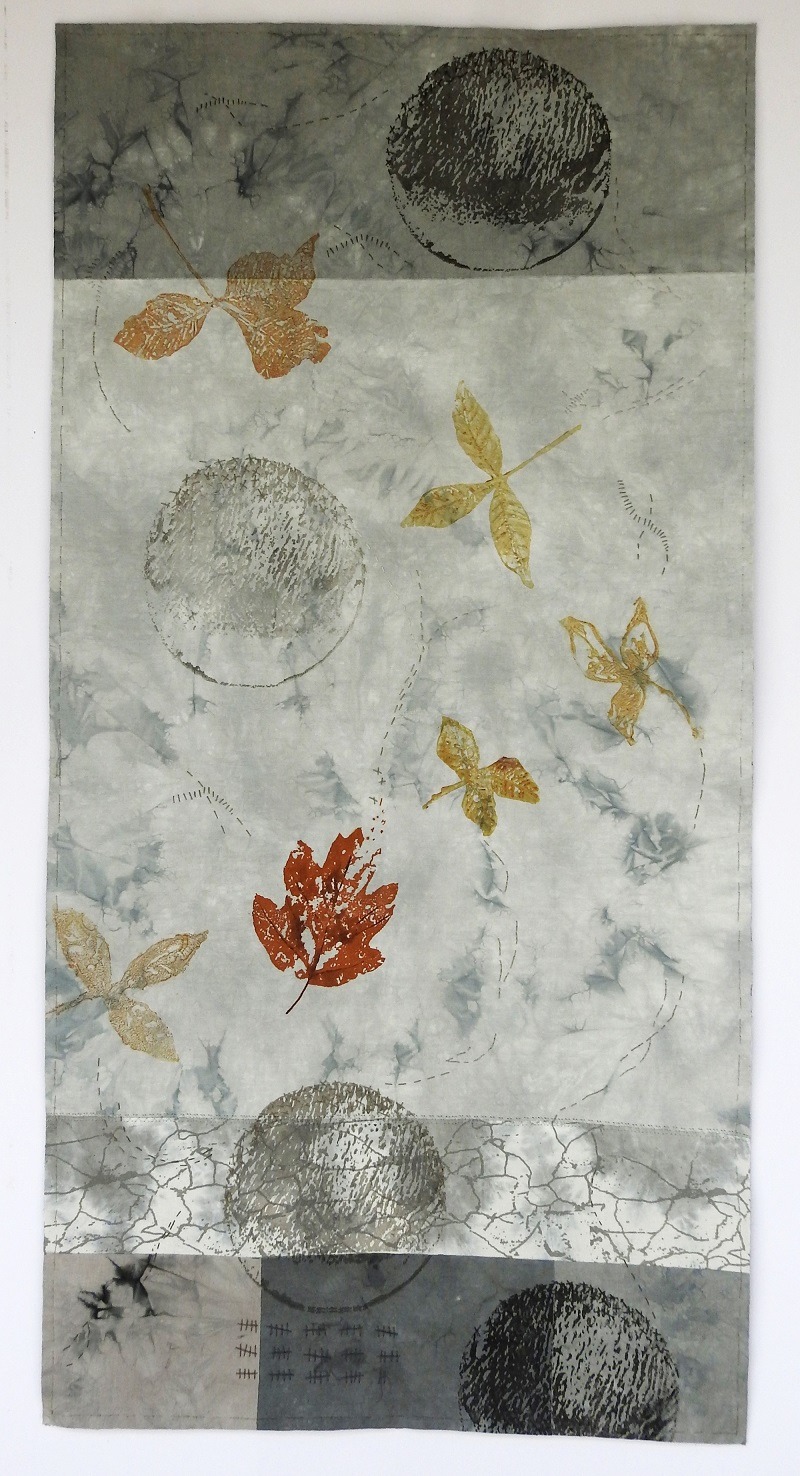
An artistic awakening
TextileArtist.org: What initially attracted you to textiles as a medium? How was your imagination captured?
Regina Dunn: Sometime near 2003, I needed a comforter for our bed and couldn’t find one I liked so I decided to try to make a bed quilt and enrolled in a class at our local quilt shop. While there, I saw art quilts on the wall and decided that was the medium for me. Also, around the same time, I saw an art quilt by Laura Cater-Woods on the cover of Quilting Arts Magazine and was astounded that it was possible to make an artwork like that out of fabric.
I absolutely had to learn how to capture the images in my imagination and put them onto cloth.
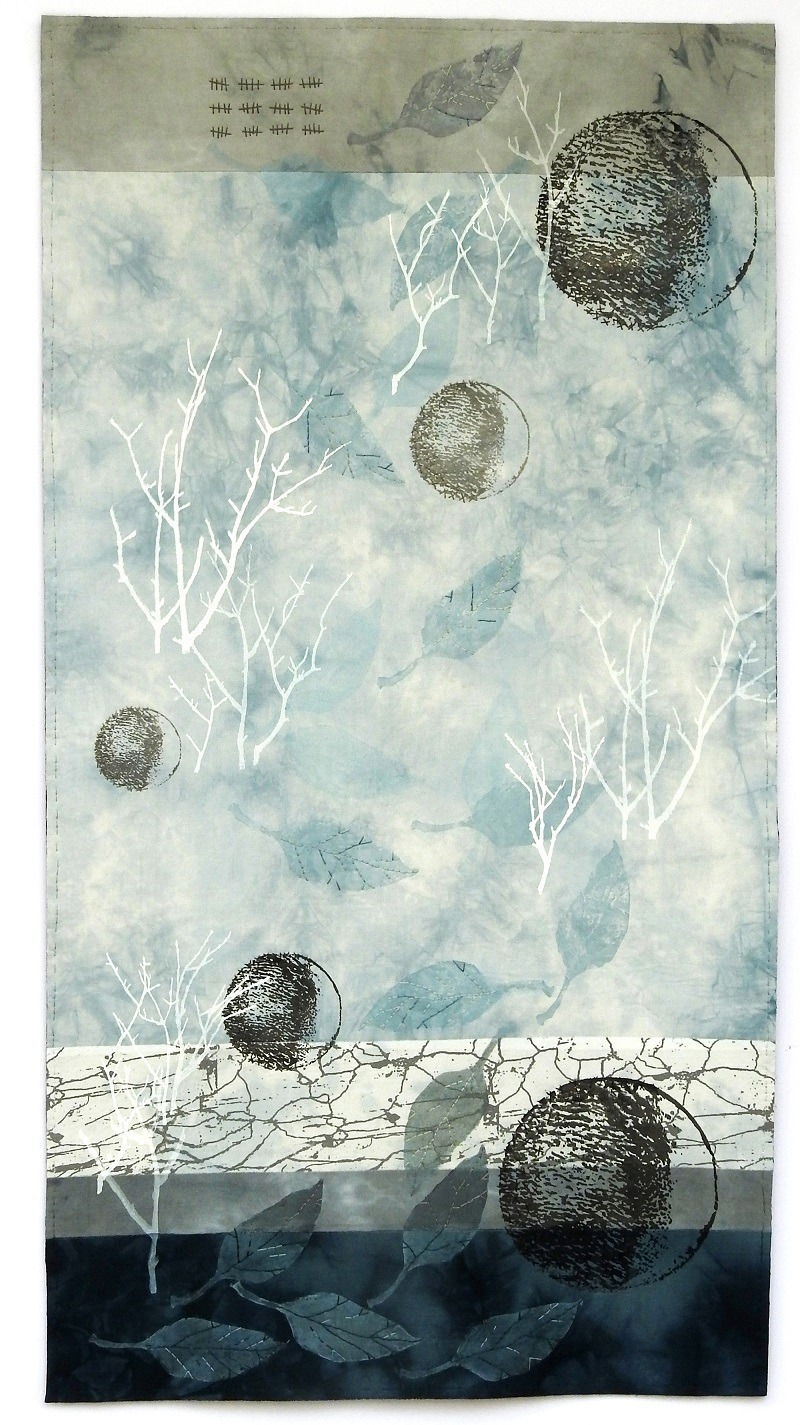
What or who were your early influences and how has your life/upbringing influenced your work?
It was my grandmother who was the one to first inspire me to work with fabric when she taught me to sew dolls’ clothes. Later, in home economics class, I delighted in making my own clothes. I never had the opportunity to take a formal art class while I was in school – only some short craft workshops here and there – but I loved to play with paint and to draw and slowly developed some basic skills with art.
I ended up majoring in chemistry and minoring in biology which led to careers as a research chemist and later on as a science teacher in a secondary school. The science background, combined with living in a house in a forest, gave me a keener sense of observation and a deep appreciation for nature and life’s complexities. It has led me to create art that is based on the natural world and the cycles that recur throughout life. In addition, my extensive travels have added a wealth of imagery and ideas that drive me forward in visual expression.
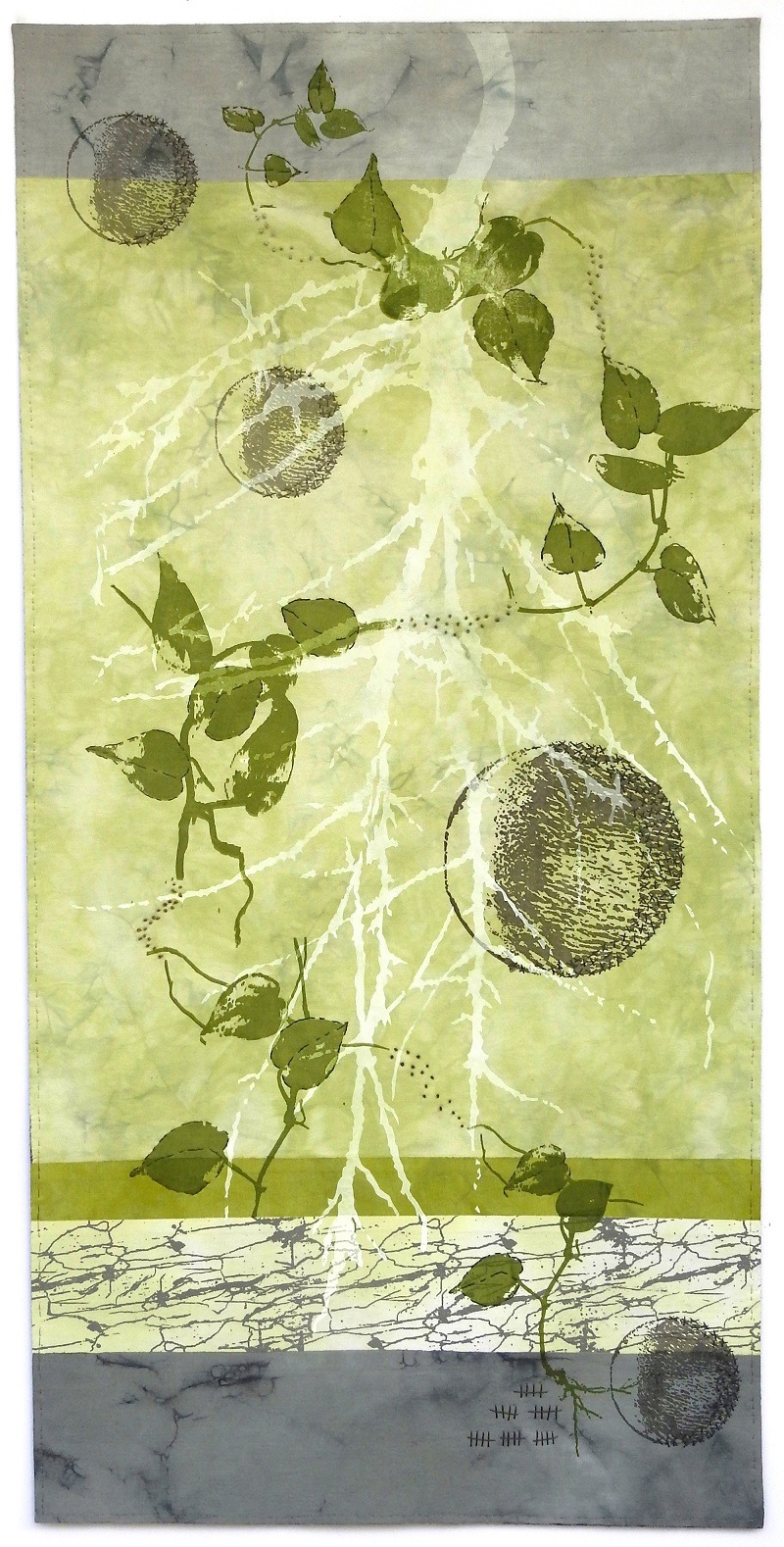
What was your route to becoming an artist?
First, I took some local workshops to learn techniques such as fusing, piecing, and finishing, and I joined a local art group that provided an atmosphere of support and learning. We taught each other what we knew and helped each other to grow, artistically.
It was a time when I was primarily technique-driven and I created pieces in order to practice and to feature my new-found skills.
Quilting Arts Magazine and SAQA got me acquainted with many of the techniques and styles of the art quilt world. Through them, I discovered several artists whose work I loved. I studied their art pieces in detail to figure out what it was that was so inspirational to me. Sometimes, it was their colour choices, sometimes it was their design sense, and sometimes it was their choice of subject matter. But doing that helped to bring into focus what was important to me.
During that period, I hadn’t yet developed a voice of my own and went from one style to another. Looking back, I think this was an important step for me in order to figure out what I liked doing and what I was good at doing. To get some formal art education in, I took a semester of painting at our local college, and even though it wasn’t about fabric art, it emphasized colour theory and colour mixing and has proved invaluable to me.
The turning point came several years ago when I read about Jane Dunnewold’s three-year program called the Art Cloth Mastery Program and considered taking it. I was actually afraid to do it and to even meet someone as well known as her. I thought that I would be so far behind everyone else and would not be able to successfully complete it. But my husband insisted that I sign up.
That class was the artistic awakening for me. It provided a place and person to connect with for a long period of time; a consistency, a time to create and evaluate and hone in on the things about art that had meaning to me. Also, it showed me which techniques to shed and which ones to nurture. During that three-year period, I finally did find my voice, confidence, and true joy at working in the studio.
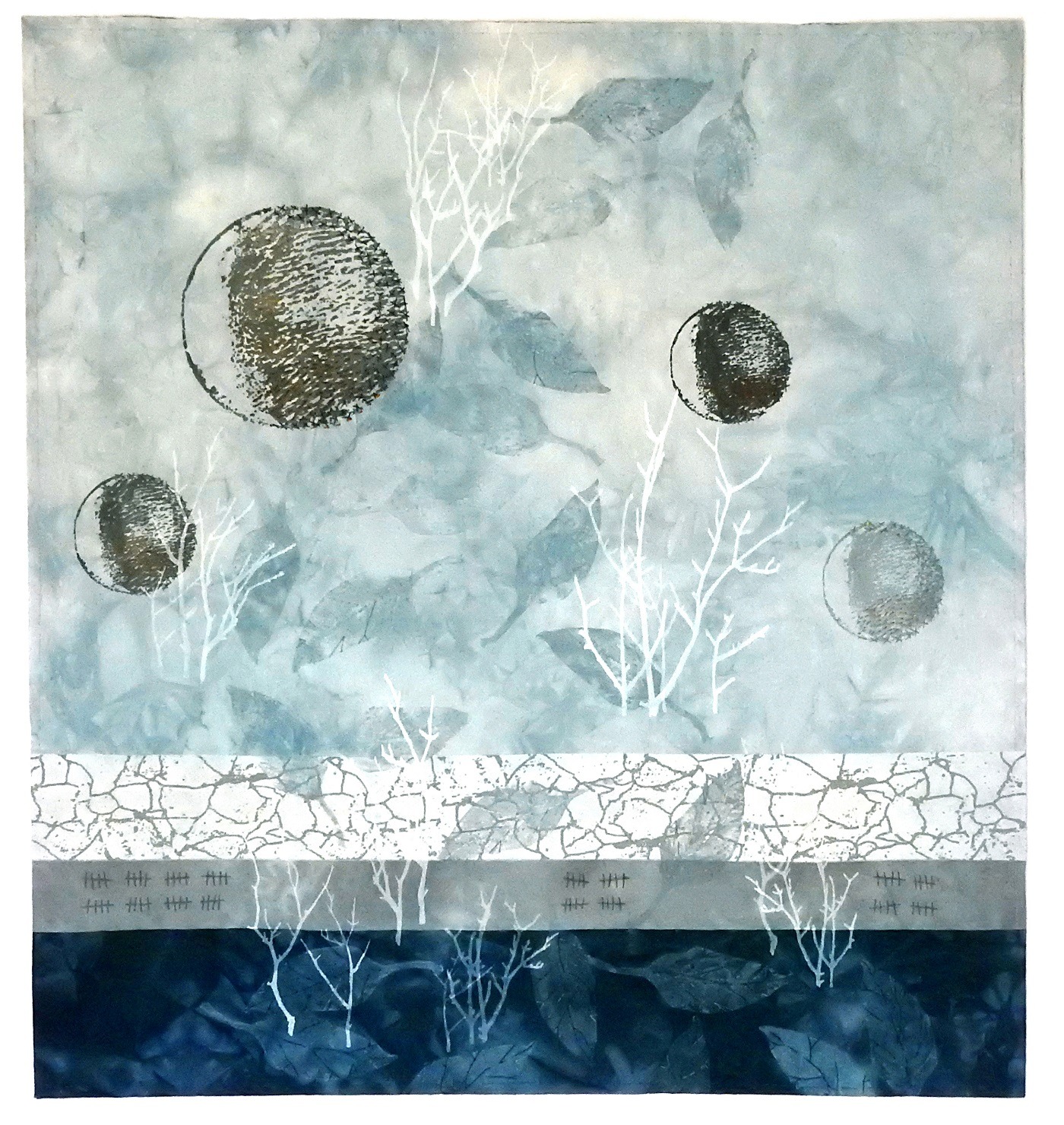
Looking for patterns
Tell us about your process from conception to creation
I usually begin with images that are calling out to me to use in some way. They come from photos I take on trips, on the bike trail, in my yard, or just out and about in our small downtown. Sometimes it is an arrangement of plants I’ve seen, or it could even be a phrase I’ve heard that triggers deeper thought. I alter them using various apps so that I can make thermofax screens, stencils, or stamps from them. Then I choose a colour palette that will get across the mood I want and I dye some fabric for a starting background.
I take a photo of it and then, using, the app ArtStudio on my iPad, I start digitally placing the images on top of the background photo. This allows me to audition things like sizes, transparency of the images, colour combinations, and how to overlap the elements I want to use. When I get a composition I like on the iPad, I start adding the images to the actual background fabric with paints and dyes.
I have been influenced by nature artist Andy Goldsworthy who strives to work with the place, and, in that spirit, I add imagery in places in the fabric where I find patterns that will enhance the nuances of the dyed cloth.
Of course, it never looks the same in real life as it did on the iPad, so this is when the real conversation between myself and the artwork takes place and I make changes to the original plan. It’s almost like the artwork is telling me what it needs. It’s a magical state of being. By the time it’s finished, it’s as though I’ve been on an amazing journey and I come through feeling enriched and fulfilled.
My series, “Transformations”, explores changes or phases we experience with the passage of time. I started with white fabric and chose a certain colour palette to evoke a specific feeling. I chose green for the part of the series about growth and renewal (like spring), and I chose blue for the part of our lives where we withdraw into ourselves to heal or rest (like winter). I chose grey with accents of red-orange to show the times when we yield to changes that are out of our control and just let things fall away naturally (like autumn).
I used layers of images that I believed would contribute to the effect; the leaves are metaphors to represent us undergoing these phases of life. The planet shapes can be moons, suns, planets, or any heavenly body moving across the sky to indicate time passing and transformations taking place. Also to add to the effect of time passing and counting time, I added hatch marks. All of the imagery I use has deeper meanings to me than would at first be seen.
The techniques I incorporated, such as dyeing fabrics in several values of the same hue, over-dyeing to produce more complex texture, printing with thin layers of specialized fabric paint, and stitching by hand, all work together to create a gentle flow of shapes, line, and colour. In essence, I used colour and botanic depictions to act as metaphors for seasons of emotion we experience.
To make sure the artwork hangs well, I fused the construction I created to felt. Aluminium slats are used on the backs to hang the artwork and make it lay flat.
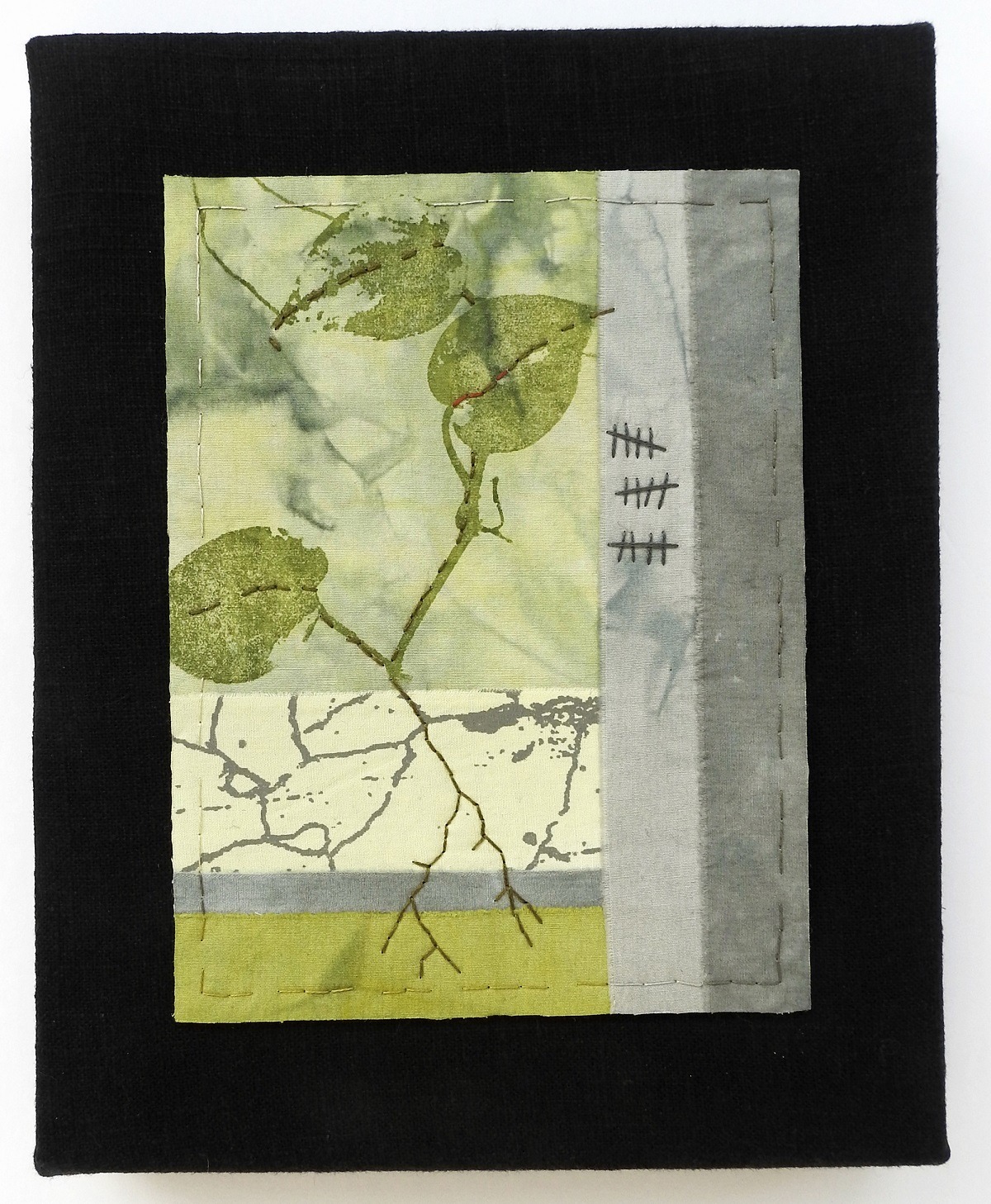
Tell us a bit about your chosen techniques and how you use them
I love to work with Procion MX dyes, both with low water immersion and thickened with sodium alginate. After I dye fabric using low water immersion, I pin it to my design wall and look for patterns that I see on it. I hang it in different orientations before I cut it to size in order to find the markings the dye made that seem to fit with the images I want to use to create a flow of patterns. Sometimes, I create new images that seem to belong to the markings on the cloth. I dye several pieces with the same dye mixture but in different concentrations so that I can place them together to get a look of transparency.
I also love to screen designs on top with fabric paints and thickened dyes. I use mostly transparent paints and add a colourless extender to further the effects of overlaps peeking through. At the end, I add stitching (usually hand stitch) to further add texture and line and find it so relaxing and meditative. It is during this stage that I feel the spark of life is added to the cloth and find closure with each piece.
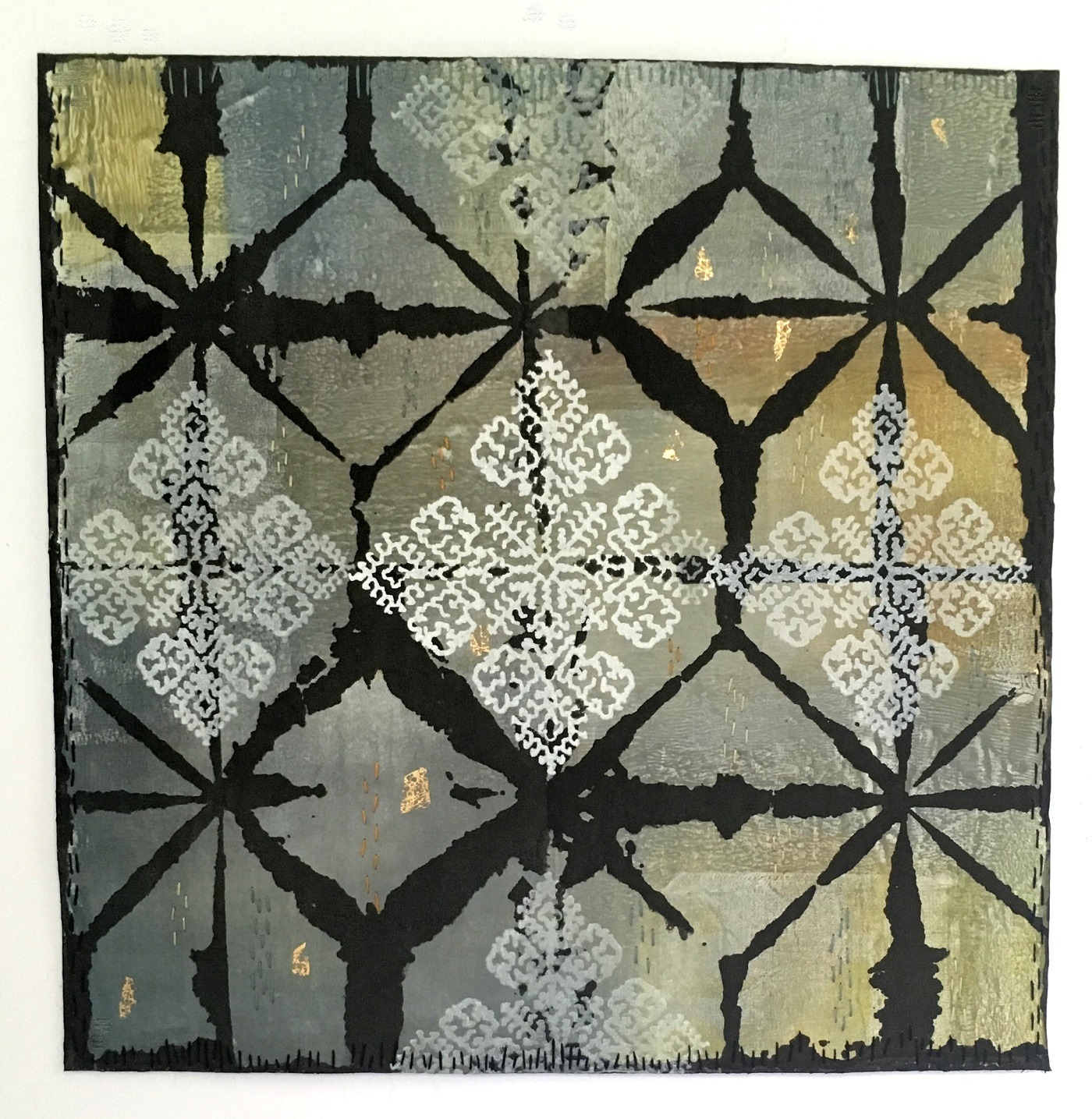
What currently inspires you?
I’ve been interested in incorporating motifs found in textiles from countries I’ve visited, but I wanted to use them as symbols in some way. So I’ve been creating thermofax screens with fragments of the designs and experimenting with how to combine them with stitch and other visual elements.
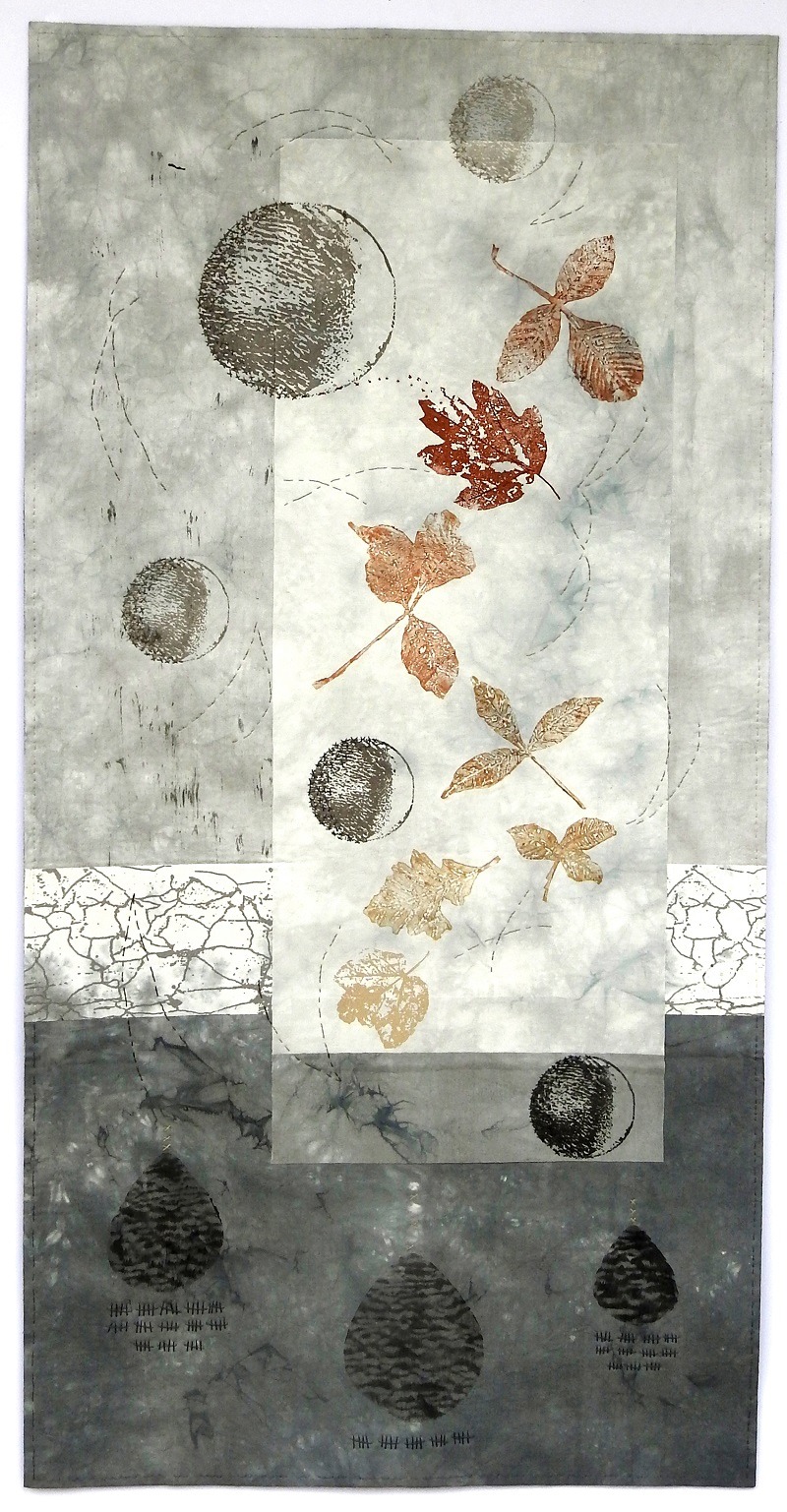
Developing abstract shape, line and colour
Tell us about a piece of your work that holds particularly fond memories and why?
My work titled Yielding is especially dear to me. The main leaf imprint on Yielding was made from a leaf my mother picked for me when I asked her to send me some autumn leaves from her yard. It wasn’t until after she passed away that I rediscovered the leaf and I wanted to use it. So I made a thermofax screen of the leaf imprint and used it as a metaphor for us yielding to the changes life throws at us.
My mother’s act of love had an energy that, to me, was so profound, and I derived satisfaction from using the image in my work. It appears to be deteriorating, which could, at first, be interpreted as sad. However, when things decay, their particles go on to give life to other things, which is noble and valuable. The focus could be, instead, to see what new, wondrous things form and happen because of this change.
All of the images and stitching on it are purposeful symbols for thoughts I have about getting older.
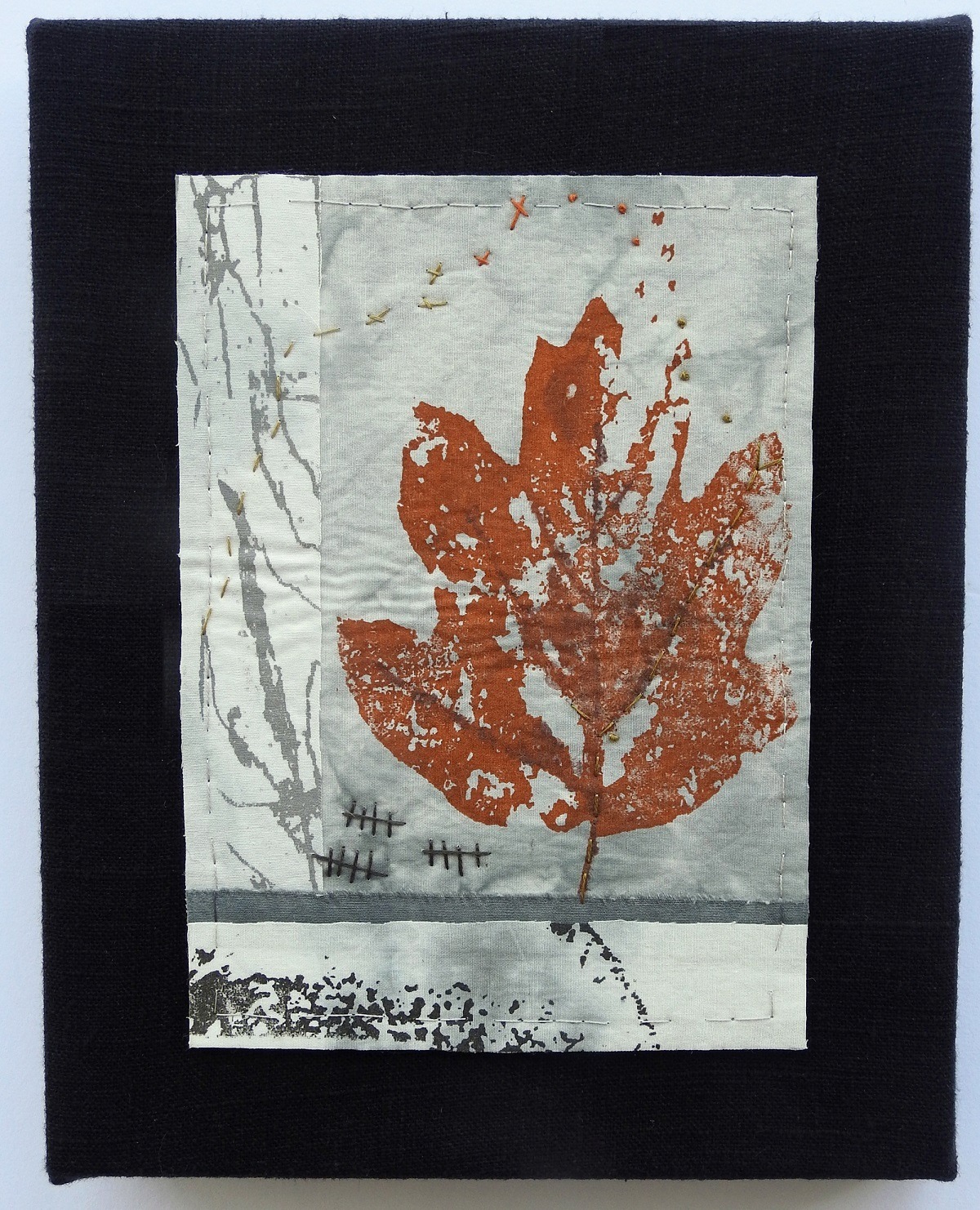
How has your work developed since you began and how do you see it evolving in the future?
I’m not trying to find new techniques like I was before. Instead, I’m trying to express an idea or an emotion and focus on imagery that I can use to symbolize it.
I’m finding that I’m feeling more comfortable with using abstract designs now than I used to, and I want to create artworks in a series, rather than as individual pieces that are not connected to a theme. Also, I can see my work becoming more about shape, line, and colour, rather than focused on a likeness to something in the real world.
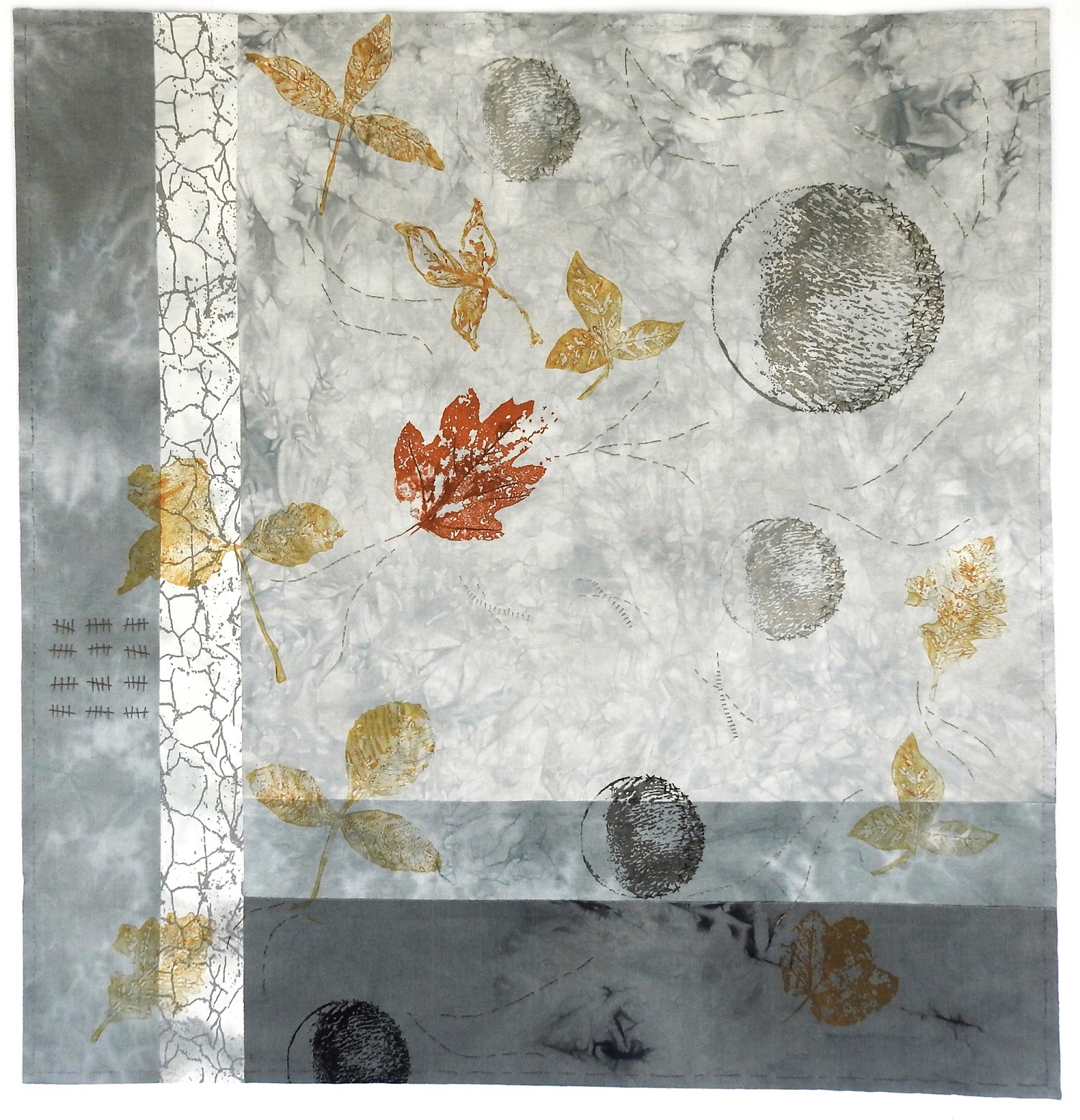
What advice would you give to an aspiring textile artist?
Be observant and figure out what it is that you like in artworks. Create often and don’t be afraid of how it will come out. Use processes in which you find joy. Also, try writing about what you want to make, describing the colours, the mood, the lines, everything you can think of about it. Eventually, your work will evolve into that which is you.
For more information visit reginabdunn.com
Has this article inspired you to develop your artistic voice? Let us know in the comments below.
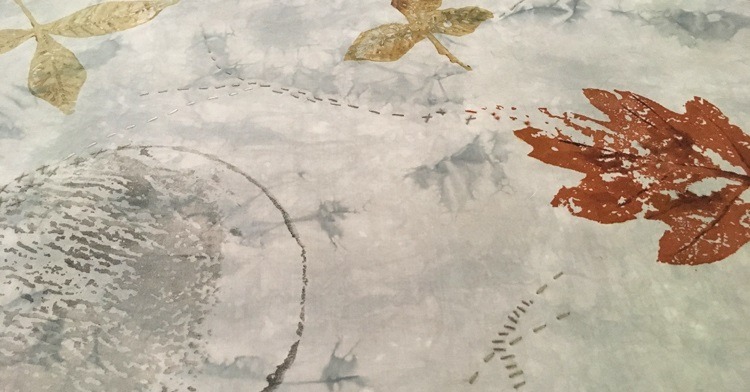
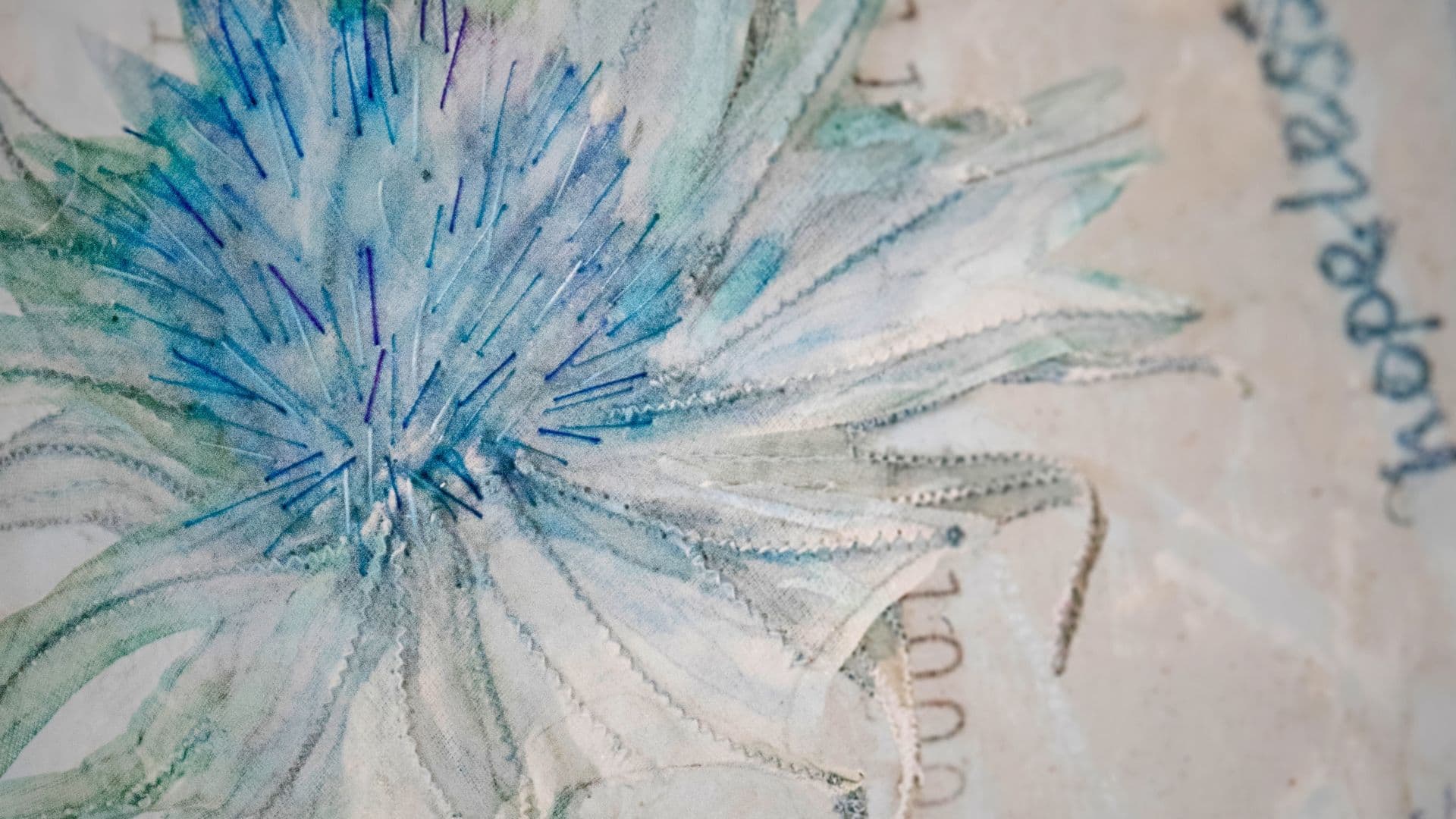
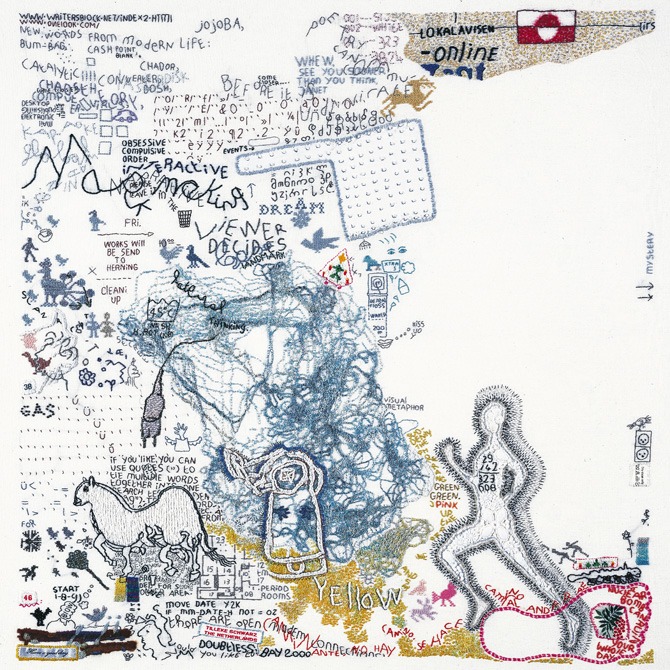
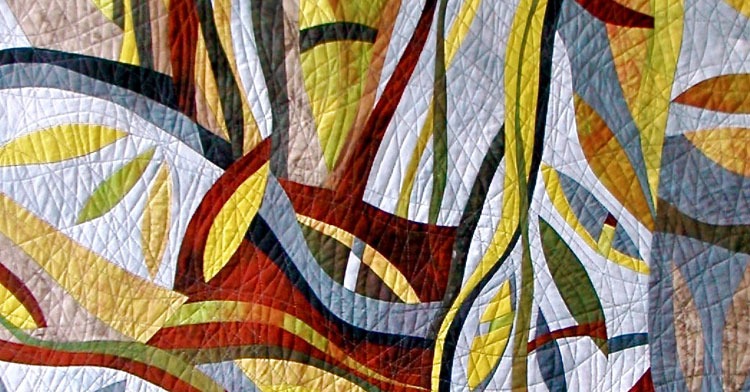
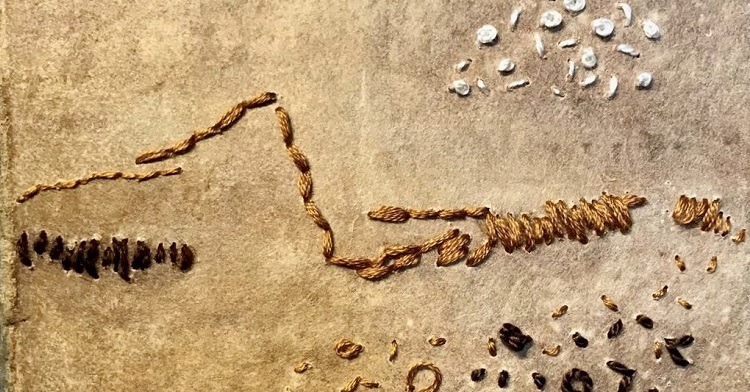
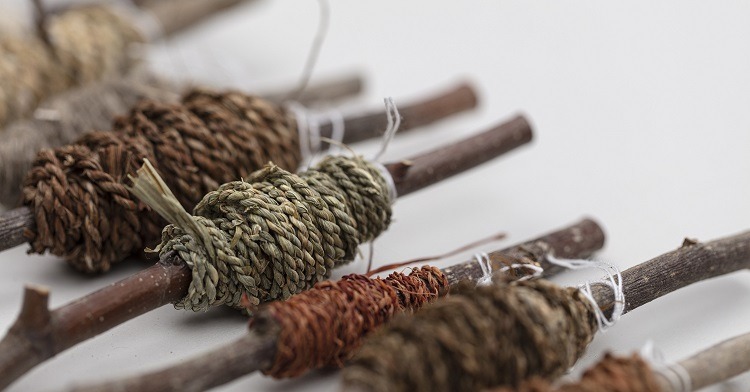
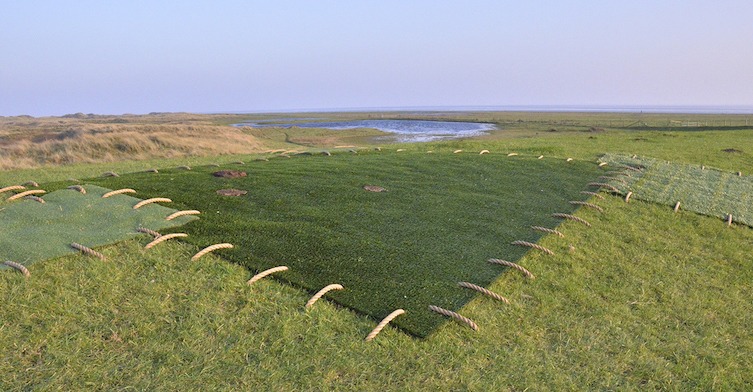
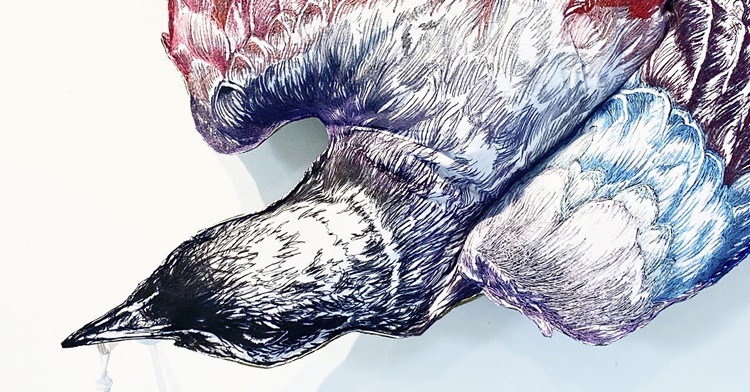
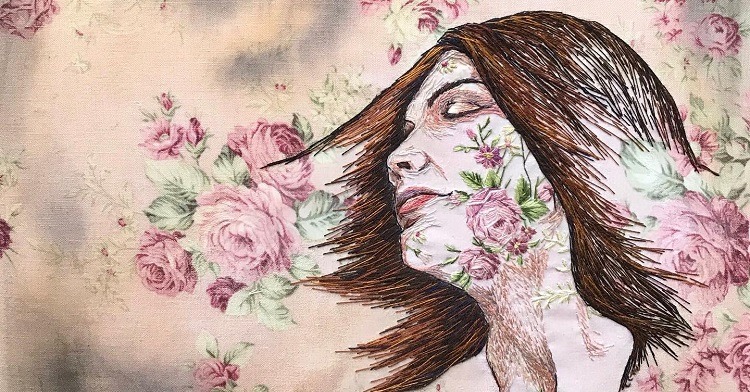
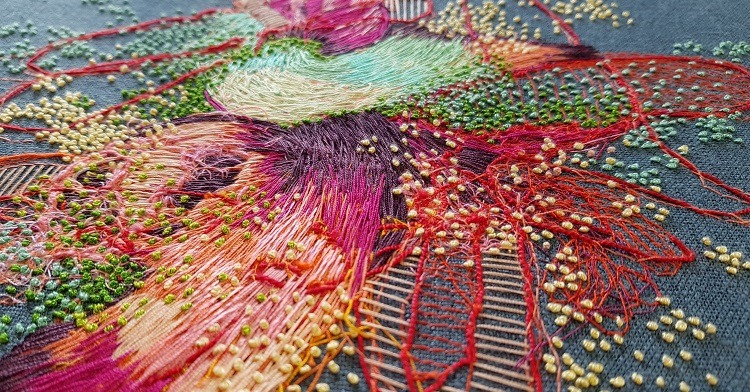
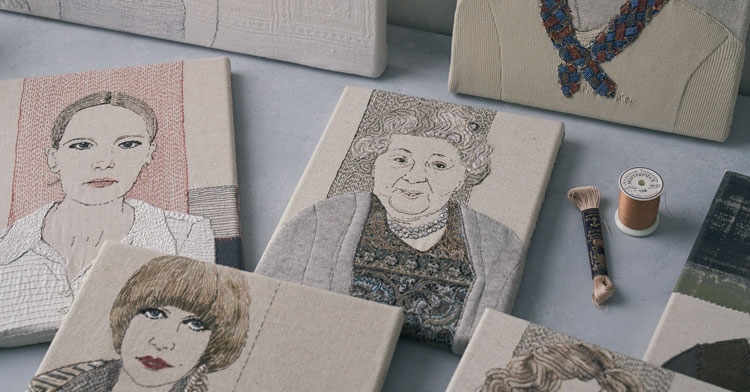
20 comments
Susan Rice
Absolutely loved seeing your work! It really resonated with me as I share a similar love of organic shapes, textures, colors and stitch. And thank you for sharing your process. This is something I am struggling with at this point. There are so many different ways to express how we see and feel that it is sometimes hard to know where to start. I have always loved fabric and stitch and incorporating that with other media, but after listening to your journey, I realize now that taking some classes might encourage me to safely explore different techniques. I look forward to following your work!
Regina Dunn
Thank you. Taking some classes is an excellent way to explore how to express your ideas. Once you have a handle on some techniques you love, you can start to experiment with your own twist on them. It’s such a fulfilling endeavor. Enjoy!
catherine
A particularly inspiring article, many thanks.
Regina Dunn
It’s gratifying to know that my words and works are being seen and appreciated. Thank you for taking the time to comment.
White Lodge Fabric
“Nice info!”
Regina Dunn
Thanks. I’m glad you found it useful.
Gail
Wonderful article. Thanks for sharing you works and thoughts. I particularly loved your words about the leaf your mother sent you. I had a peony plant my mother had given me which I moved three times in CA and it always thrived. When I began eco printing, I used the leaves from that tree and the prints never failed me. We moved to New Mexico two month’s ago and I couldn’t take the tree with me which was at once sad but the new owner of the house was an arborist and absolutely loved the peony’s which were in bloom and inspired her purchase. To me, that particular peony tree helped us to our new journey and will be admired anew. Already went to a nursey here and will soon be planting another peony garden in honor and memory of my mother.
Regina Dunn
We are so lucky to have gifts from people that we treasure and to find ways to honor them. Thanks for sharing your story.
Maryse
I love to learn about artists’ growth.As I grow creatively It helps and reminds me to keep creating.Thank you
Always cheap if,
Maryse
Regina Dunn
Reading about the path of others helps us to see how much we all have in common and helps show ways that we can use to find success in our journey.
Liz Collinge
Really enjoyed reading this article. It has given me some ideas to move on. Its always good to hear about artists personsl journeys and relate them to your owm. Thanks
Regina Dunn
I’m glad you’ve gotten some ideas from the article. Sharing stories is a way to connect us all and move us forward.
Jane Dunnewold
Wonderful article on a dedicated and inspiring artist.
Regina Dunn
I can’t thank you enough for the inspiration you’ve given.
Regina Furtek
This interview speaks to me deeply on many levels. I have worked as a home textile designer for industry for almost 30 years. And, while I was successful and good at it, I wasn’t always fulfilled. Over a year ago after the weaving mill I worked for was acquired by a larger textile corporation, I lost my job as part of a layoff. I have been doing some freelance work since then, but feeling a bit lost.
I have dabbled in photography and have always been an art lover. But, I haven’t found my voice as an artist and not sure if I should keep pursuing industry work. Trying to become an artist feels risky and intimidating. There are so many other talented people out there especially in a city like New York.
Yet, when I hear a story like this of overcoming doubts and fears I wonder if I can do it too.
And it stirs up repressed longings. Her process makes complete sense to me. And it helps to have it broken down in steps.
Thank you for sharing it!
Regina Dunn
Thank you for taking the time to make such an insightful comment. It seems to be a common occurrence for artists to be working on other careers while creating. I wish for you much success and happiness in whatever path you choose.
judith johnson
yes, I think it is a beautiful idea and fabric
Regina Dunn
Thank you for the wonderful comment. I appreciate it.
Jan
Loved hearing about Reginas process and all the tecniques.
Regina Dunn
Thank you. I hope it can be useful to you.